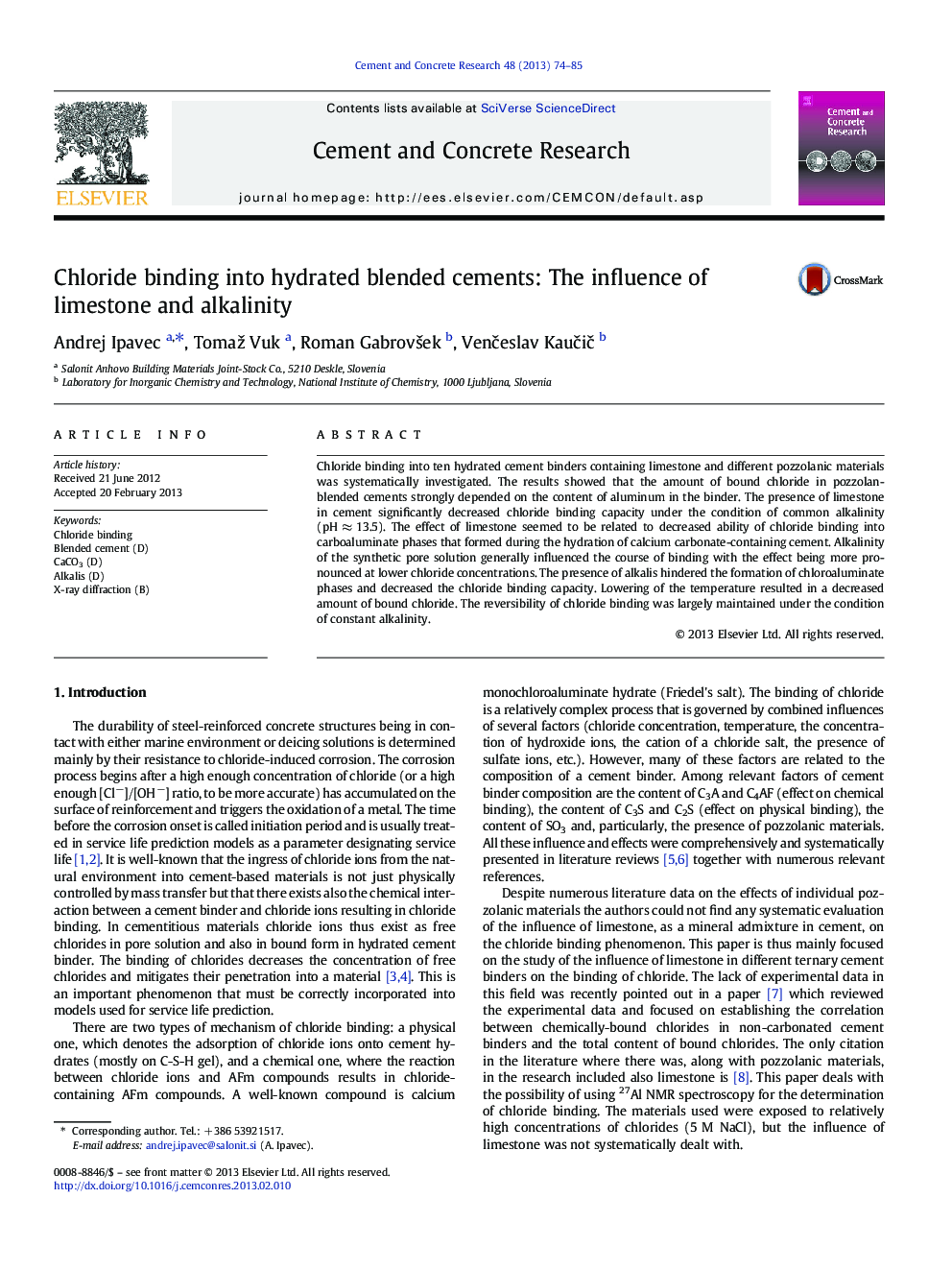| Article ID | Journal | Published Year | Pages | File Type |
|---|---|---|---|---|
| 1456526 | Cement and Concrete Research | 2013 | 12 Pages |
Chloride binding into ten hydrated cement binders containing limestone and different pozzolanic materials was systematically investigated. The results showed that the amount of bound chloride in pozzolan-blended cements strongly depended on the content of aluminum in the binder. The presence of limestone in cement significantly decreased chloride binding capacity under the condition of common alkalinity (pH ≈ 13.5). The effect of limestone seemed to be related to decreased ability of chloride binding into carboaluminate phases that formed during the hydration of calcium carbonate-containing cement. Alkalinity of the synthetic pore solution generally influenced the course of binding with the effect being more pronounced at lower chloride concentrations. The presence of alkalis hindered the formation of chloroaluminate phases and decreased the chloride binding capacity. Lowering of the temperature resulted in a decreased amount of bound chloride. The reversibility of chloride binding was largely maintained under the condition of constant alkalinity.
